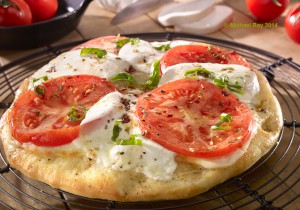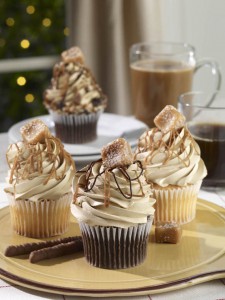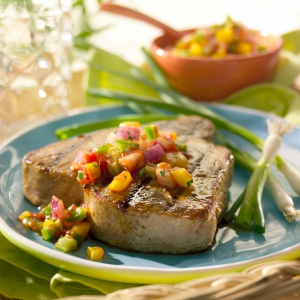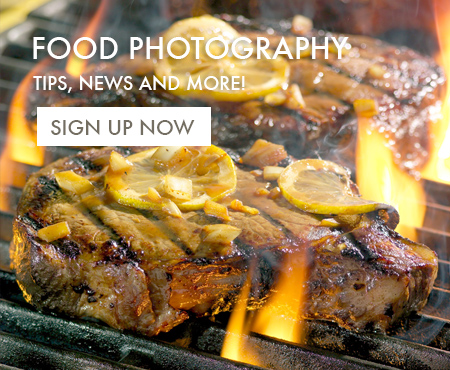In food photography, how do you make shadows disappear?
I’m assuming that you mean cast shadows, and the answer to your question is, “you don’t”.
If there is light, there is shadow. It’s a fact of life. Sure, some shadows have softer edges than others and some shadows are darker than others. That’s probably something we should talk about a little.
You can minimize cast shadows a couple of ways, but you really can’t make them totally disappear. The two suggestions below are probably the two most popular solutions that novice food photographers use to lessen shadows in their photos.
Large light source as your main light

I have a lot of shadows in this shot, but I don’t find them objectionable. I also have a lot of texture.
Most novice food photographers eventually seem to gravitate to large light sources, as their main light. They do this because large sources are very forgiving and they tend to minimize cast shadows. If you really hate cast shadows, then a large light source will help you eliminate this problem for you. And the larger the better.
The more fill light, the lighter the shadow
Another way to lighten shadows is to add fill light. Fill light will “fill in” both the lighted areas and the shadows too. The more fill light you add, the lighter your shadows will be. So, if you hate shadows, then add lots of fill light.
So there you have it. If you use both of those ways to lessen your shadows, you get less shadows, but your food photography will not be as good as it could be. In fact, they may be worse.
My advice is this. Live with shadows. Embrace them and use them to your advantage. Harness them to do your will and you will be a MUCH better food photographer.
A large light source, as your main light, is very forgiving to use, but it is terrible at creating texture. The larger the light source, the less texture you will create with that light. I like texture. I do everything I can to get as much texture as possible in my food photos, so my main light source is a light that casts a very sharp-edged shadow. I admit, it’s not easy to learn to use properly, but once you do, you’ll never go back. I’ve tried to go back to using soft boxes, but I just can’t. Every time I try, I hate it.
So here are some tricks to using small light sources than create texture and crisp shadows.
Keep the light source low so that the shadows are long ones. If the shadow ends up being so long that it runs out of the frame, chances are, you won’t even think of it as a shadow. Try it…
You have to be very very careful about where you place these long shadows. You don’t want them running across anything important, like your main subject of your photo. If you have a tall wine glass on the top right-hand side or your frame, you might be well off to place your main light on the opposite side of the set, so that the shadow from the wine glass isn’t cast across your main subject, but out of the crop of the photo. Many times, you can use these long cast shadows as interesting compositional elements. I do it all the time.
Low camera angles lesson the negative effect of shadows
I like to shoot from low angles for a couple of reasons. I think that low angles tend to show off food better than an angle from above. My favorite angle is to shoot right over the lip of the main dish. That way, I tend to see the height of the food, which gives the food dimension. Shooting straight down on food might create some interesting designs with the plates, but it sucks for showing off the food. BUT… putting that aside, if you shoot from a low angle, cast shadows tend to be less of an issue. They end up being small, slightly dark lines, running across the frame and become much less noticeable and less objectionable.
Glare light
Another way to lessen the negative affect of cast shadows, especial on plates or shinny surfaces, is to use a glare light. A glare light will lighten surfaces with a shine or glare. It doesn’t do much to actually lessen the shadow, but is sort of masks it. You can even use this technique to make some interesting “action” in the composition.
Crop tight
Another way to lessen the effect of cast shadows is to crop relatively tightly on your subject. Don’t misunderstand me, I crop first and then I light. I don’t crop for the sake of lighting, but If YOU have the freedom to crop wherever you like, I’m just saying that cropping off then ends of long shadows, makes them less noticeable.
About fill light
As I mentioned above, too much fill light flattens out food photos and is a bad thing. That’s still true. I use fill light sparingly. Sometimes I don’t use enough and the shot ends up looking too moody. I lean toward moody most of the time. To me, I prefer it, but not everyone does.
My advice to you is this. I suggest that you go to 101 Best food photographers page and look at the some of the photos on these photographer’s pages. While you’re doing this, ask yourself “Where are the shadows”? “How did these guys USE the shadows”. “How did they hide the shadows”? Shadows are not bad things like most novice food photographers think. Embrace the dark side…






Hi Michael,
Great article once again. Very informative and helpful. I’m trying to understand what a “glare light” is and how it would change a particular photo. Is it possible to do a before and after photo so I can visuslize the effect of what a glare light is?
Thanks and best regards.
I’ll see what I can do… I know I have some illustrations, I just have to find them.
Hector – Did you follow that link?
Hi Michael,
Frankly speaking, I don’t know how.
Hi Hector, In the content above in the “Glare Light” section, there is a red colored link titled, “use a glare light.” That will take you to the glare light page.
Hope that helps! 🙂